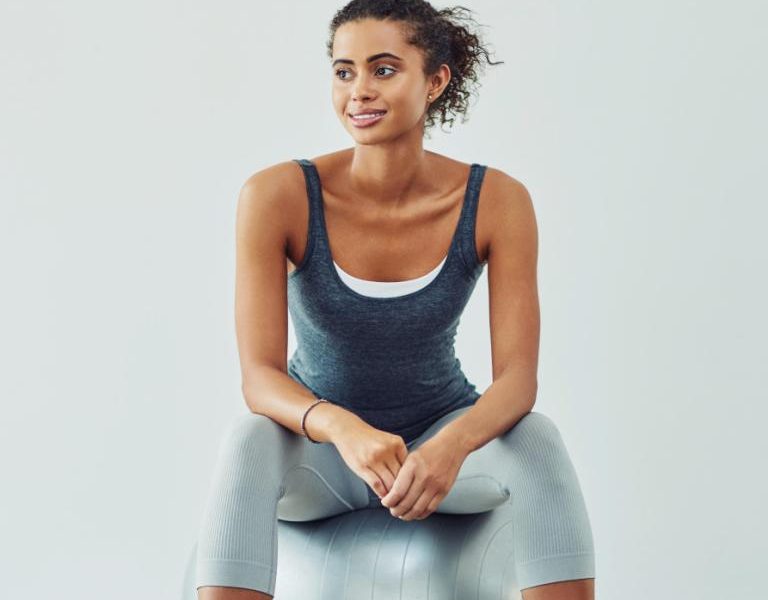1. Tone your tum
If you hate crunches and want to avoid planks at all costs, then this workout tool can help you tighten up those abdominal muscles. There are plenty of exercises you can do on a stability ball to help you engage those unused muscles, as Louise explains. “The great thing about the stability ball, is that as soon as you sit on it, you have to work to stay on it,” says Louise. “All the muscles have to engage to keep you upright because it’s a dynamic exercise. Your core in particular, will work hard as you’ll use it to help you stay stable as the ball wobbles.”
2. Perfect your posture
Correcting your posture isn’t always easy, but a stability ball can help you keep your back straight and stop you from hunching over your desk. “As soon as you sit on a stability ball, the muscles around your spine have to activate and adjust to keep you upright,” explains Louise. “It helps you to lengthen through the spine rather than sitting with a rounded posture like you would on a chair. By using a ball, you can activate those dormant muscles.”
3. Balance benefits
Strengthening your postural muscles, which are responsible for helping you keep upright, is key for good balance. “People with poor balance are often scared of doing balance exercises for fear of falling, but using a stability ball can be a great tool to use to help you gain confidence as you have something to support you,” says Louise. “We use our postural and core muscles to stay stable, so over time the ball helps to strengthen these muscles and improve our overall balance to prevent everyday injuries, something that becomes even more important as we age.”
4. Sit actively
“Sitting down during a workout may seem counter-intuitive, but there are pros to planting yourself on a stability ball rather than a chair. If done correctly, it can decrease discomfort and help you if you suffer from back problems. “When sitting on a ball, your hips and knees should be at 90°,” says Louise. “Keep your knees in line with your ankles and make sure your feet stay flat on the floor. To ensure you have engaged your core, gently pull your tummy upwards and backwards towards your spine. Sit still and focus on your breathing. Slowly inhale through your nose and out through your mouth. This is a great starting exercise, as you’ll notice that your back and core are getting stronger as you sit for longer each time.”




















